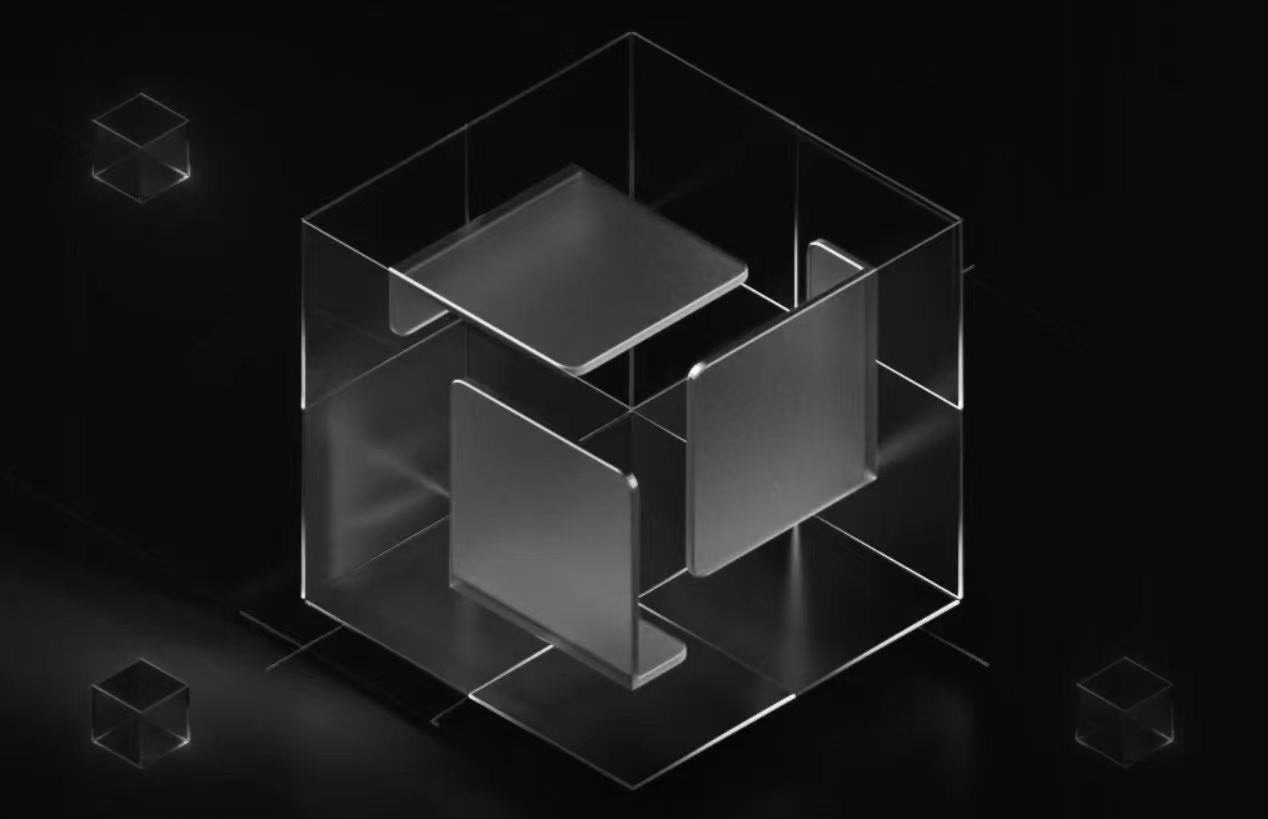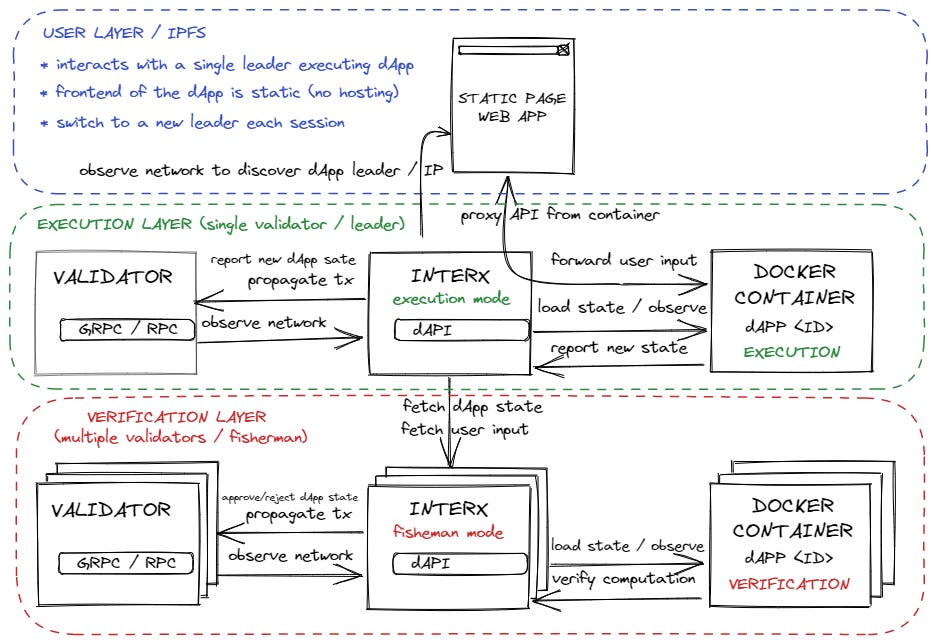On December 12, 2023, Celestia announced that it would integrate its data availability layer with Polygon Labs’ Chain Development Kit (CDK), once again igniting heated discussions in the community about modular blockchains. Celestia’s definition of “modular blockchain” is a blockchain that outsources at least one component of the blockchain’s execution, consensus, and data availability to an external independent chain. In addition to the classic modular blockchain concept, the Cosmos ecological L1 project KIRA also proposes a brand new concept - hyper-modularity.
New concept: Hypermodularity
Hyper-modularity not only achieves modularity at the software level, but also pays attention to the separation between modules at the network level. The software layer focuses on the functions and logic within the system, while the network layer focuses on the communication and connections between system nodes. Many modular chains share a limited number of operators, and the homogeneity between operators can lead to a high degree of coupling, making the system vulnerable to attacks and increasing the difficulty of maintenance. The ultra-modular design allows each component to run in an independent module, and the modules of different contracts can adopt different security mechanisms and protocols.
KIRA is an L1 built on Tendermint and Cosmos-SDK, using a hyper-modular architecture. The investors behind it include TRGC, NGC Ventures, Math Wallet, etc. Its consultant is Alessio Treglia, director of engineering at Tendermint. KIRA provides developers and users with more efficient and flexible options through an architecture and consensus mechanism different from the current modular blockchain.
MBPoS consensus mechanism
KIRA has launchedMulti-Bonded Proof of Stake(MBPoS) consensus mechanism. Traditional staking mechanisms typically only allow a single native token. MBPoS allows for staking multiple assets, even NFTs. MBPoS facilitates larger capital inflows by allowing multiple assets to be pledged, providing a more flexible, secure and incentivized consensus mechanism. When a certain asset faces risks or market fluctuations, other pledged assets can still maintain the stable operation of the network.
Users participate in network security by staking assets and receive income from two aspects: block rewards and a portion of transaction fees. And set a cap on the income. This interest rate cap is set to ensure the stability of the network and prevent certain participants from controlling the entire network by spam-issuing tokens. In addition, the Staking Derivatives issued by KIRA for the pledged tokens, also known as LSD, make all pledged tokens liquid, tradable and transferable.
different architectures
Celestia first proposed the concept of modular blockchain, decoupling the blockchain into three layers: data, consensus, and execution. In a single blockchain, these three layers of work are all completed by a network. Celestia focuses on the data and consensus layer, and L2 allows Celestia to be responsible for the data availability layer (DA) to reduce interaction gas fees. For example, Manta Pacific has adopted Celestia as the data availability layer. According to Manta Pacifi official news, DA costs have been reduced by 99.81% after migrating from Ethereum to Celestia.
Single Blockchain VS Modular Blockchain
Celestia uses light nodes to access data, but light nodes need to communicate frequently with full nodes to obtain data. Although node resource requirements can be reduced, in large-scale networks, communication between nodes may be inefficient due to latency.
KIRA designed what they consider to be a uniqueHierarchical structure. This structure involves each modular sub-component (such as DA, execution, etc.) being operated by the same set of validators/nodes. The same people are involved both in validating the security of the entire blockchain and can choose to participate in the verification and execution of specific applications. In this setup, the system knows exactly which nodes are running a specific application and verifies that the application is being executed correctly. By knowing exactly who should own the data and who doesnt need it, you can maintain state at the maximum replication level when replicating data while avoiding unnecessary replication, thereby improving efficiency.
KIRA architecture diagram
KIRA is divided into user layer, execution layer and verification layer. Communication between these three layers relies on the content access layer. The content access layer is the cornerstone of KIRAs design, acting as a middleware system between the client-hosted front-end application (static IPFS pages) and the back-end (the blockchain acting as the settlement layer).
This middleware system KIRA is named INTERX and is a decentralized API through which dApps, interactions, and data status can be executed without relying on any third-party services (such as light clients). INTERX also allows applications to use protocols such as TCP (for reliable, ordered data transmission) and UDP (fast but not guaranteed communication) for output, providing a more flexible communication method for applications, especially for those who need Highly interactive applications such as games are very important.
INTERX has two modes, execution mode and fishermen mode. INTERX in execution mode acts as an API proxy between the user layer and the execution layer, forwarding data changes (transactions) generated by the dapp to a single validator (leader) for execution. INTERX in fishermen mode acts as a broadcaster between the execution layer and the verification layer, broadcasting data changes generated by dapp to multiple verifiers (fisherman). If fishermen observe inappropriate behavior or mistakes by a performer, they have the right to challenge it. If the fishermens challenge turns out to be correct, they will receive a reward. Conversely, if their challenge is incorrect, they may face the penalty of losing part of their mortgage.
In addition to INTERX,KIRA also has two products
MIRO: A front-end application and web wallet for the KIRA network that allows users to interact with the KIRA blockchain via the decentralized API INTERX. It provides an easy-to-use interface for managing KIRA accounts and assets, making it suitable for a wide range of users. When a MIRO web application page is loaded into the browser, all operations performed on the local computer occur locally. There is no need for any hosting server or access to the Internet other than the IP of any local or public INTERX node.
SEKAI: Responsible for processing all KIRA on-chain application interaction logic, such as processing transactions and state transitions, executed by consensus nodes (validators). The validator monitors the actions performed by the executor. They have the right to challenge an executive if they observe misconduct or errors.
Related technologies
In addition to the consensus mechanism and architecture design, KIRA has also introduced some new concepts at the technical level. The development of each concept involves more technologies and requires the team to disclose more details in the future:
Virtual Finality Gadget (VFG): A mechanism used to verify transaction finality in applications, providing developers with the ability to customize verification logic, allowing different validator nodes to use different, non-public verification strategies for verification The mechanics of the transaction. This diversity and privacy of verification strategies makes the system more robust and difficult to exploit by malicious actors because malicious actors cannot predict all verification strategies.
Pessimistic Rolldowns: A type of Rollup that, with the help of VFG, can execute off-blockchain, deterministic, and non-language-specific code while having faster finality and settlement times than zk Rollup and Optimistic Rollup.
Cross-Application Messaging (XAM): Facilitates communication between different Rollups. XAM allows you to create decentralized validators, govern DAOs, and mint tokens directly on L1, seamlessly combining functionality provided by other applications.
Metafinality: The core concept of Metafinality is to establish consistency between multiple blockchains to external networks and systems through some mechanism or protocol, thereby simplifying cross-chain and cross-application integration. Users or systems can more easily get a unified view of the entire multi-chain system without having to run nodes on each chain.
challenge
In terms of the economic model design of the blockchain system, the design of modular blockchains such as Celestia has been simplified compared to traditional single blockchains such as Ethereum. However, this modular design has not yet been fully time-proven, so its long-term economic benefits remain to be seen. Ethereums Gas mechanism covers the consumption of block space and computing resources, while Celestia itself does not include a computing layer, which allows the pricing of computing costs to be borne by downstream protocols. On the other hand, KIRA, which represents the concept of ultra-modularity, needs more time to verify the effectiveness and rationality of its token economic design.
In addition, from the perspective of terminal applications, Celestias downstream applications and products for end users will require a longer period of construction and development. As an emerging platform, KIRA needs more time to build its ecosystem and applications. The needs and development of these applications are the key to capturing real value and embodying the value of the KIRA protocol layer. Only when application requirements are realized can KIRAs protocol layer value be truly transformed.
Mainnet to be determined
KIRA launches test network in July 2023Chaos Network. Unlike traditional test networks, ChaosNet has the property that account balances remain consistent or do not change significantly between new iterations. In the initial stage, ChaosNet will be operated by the core team. Over time, the community will gradually be granted more autonomy, including proposing upgrades, organizing governance, recommending changes, and electing new validators and governance members.
Regarding the launch of the mainnet, although the core part of KIRA has been completed, without sufficient infrastructure support, the launch costs and coordination work will be very high. The KIRA team stated that it is actively working to reduce the cost of launching applications. And it is not economically reasonable to launch the mainnet under KIRA’s current market value (28 million). FounderAsmodatIndicates that the launch time of the mainnet will be affected by the attention and demand of the KIRA project.











